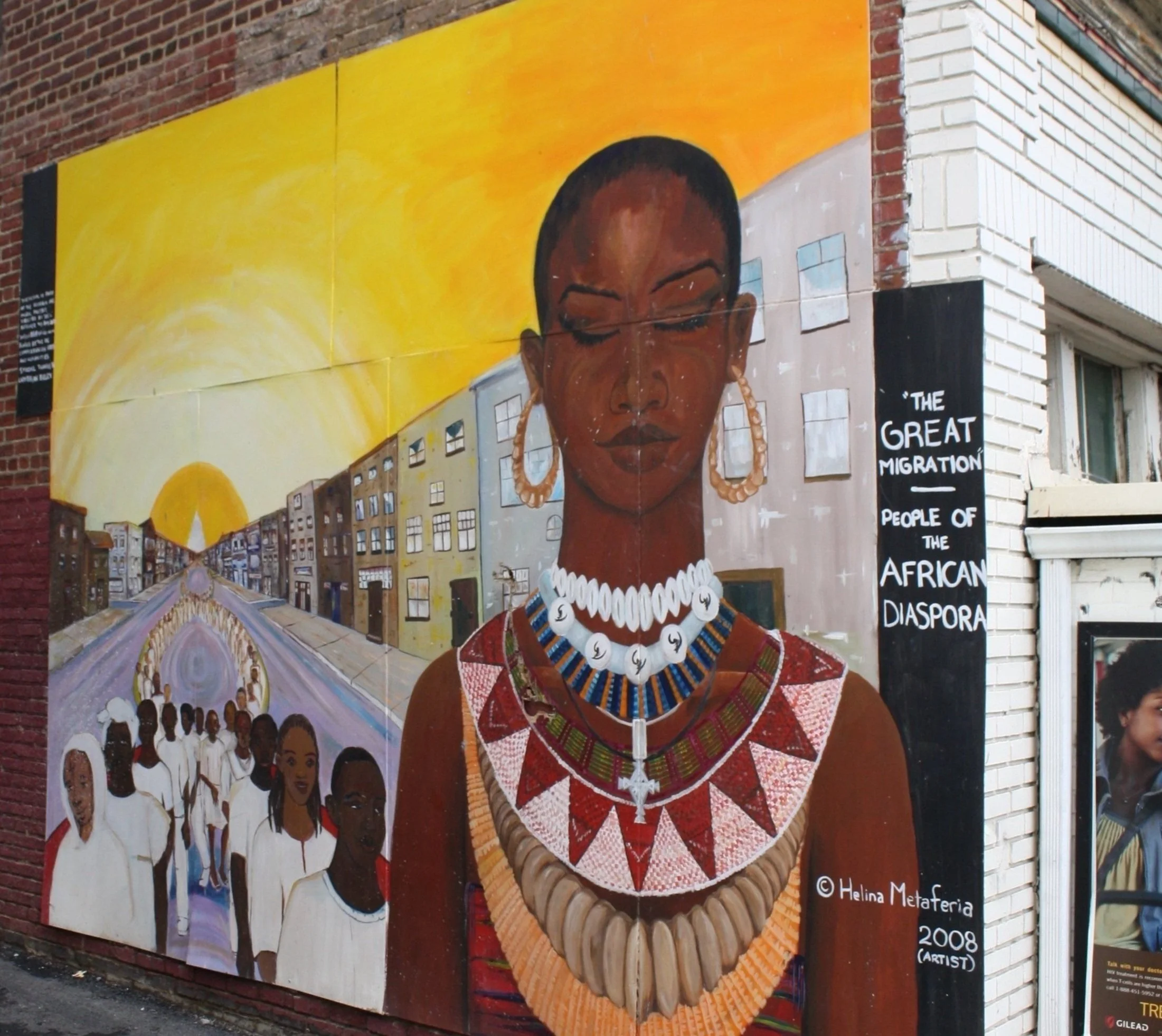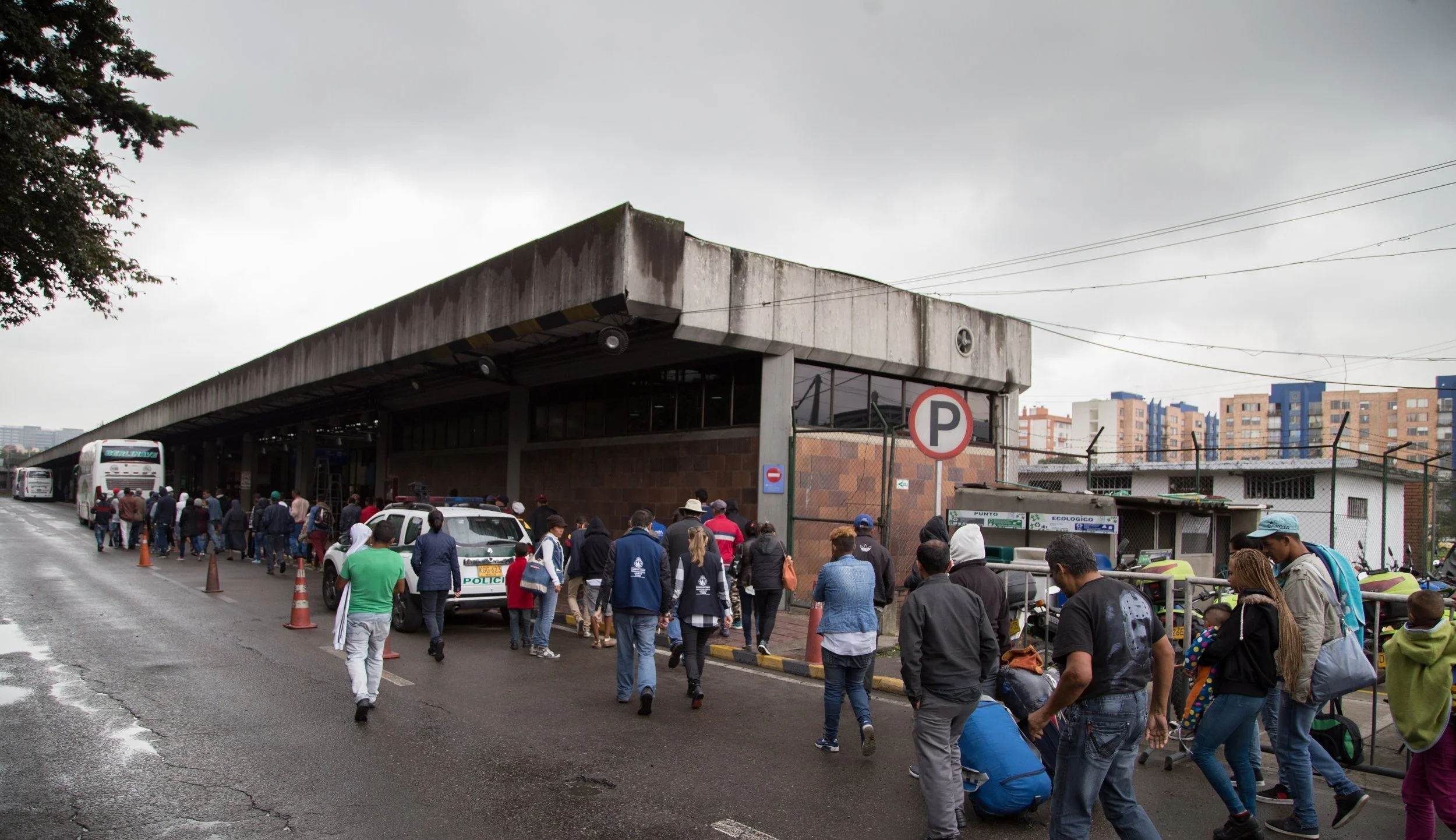Lesson Objectives
Trainees will be able to:
Learn about key migrant histories—both domestic and international—that have shaped Washington, D.C.
Recognize the significance of Latin American migration in the construction of contemporary D.C.
Identify how the changing dynamics of migration in Latin America have transformed the D.C. immigration context.
Introduction
Washington, D.C. is known today as an international city with a large population of first and second generation immigrants. Yet, this is a relatively new classification for the District which has only in the last few decades become home to such a large proportion of foreign-born residents. Historically, D.C.’s primary migrant population was almost entirely domestic. Beginning the mid-twentieth century, Latin American migration became an increasingly significant contributor to the construction of modern day Washington, D.C.
Domestic Migration
Migration has long-shaped the history of the nation’s capital. However, until the late-nineteenth century, newcomers to the District were primarily domestic migrants. D.C. is a historically black city that has been intimately shaped by its Black population, many of whom came to the District as recently as the early- to mid- 1900s seeking economic opportunities after World War II or fleeing Southern Jim Crow laws during the Great Migration. By 1970, Black Americans “constituted 71 percent of the city's residents.”
Murals on the exterior wall of Ben’s Chili Bowl on U St. in Northwest Washington DC. The U St. Corridor is a historically Black neighborhood that served as a center of culture and social change even during the era of Jim Crow laws. Flickr/Ted Eytan
This 1935 photo points to demographic changes in DC. during the Great Migration. Library of Congress/Carl Mydans
Mural entitled “The Great Migration: People of the Africa Diaspora” along Georgia Avenue in Petworth Neighborhood of DC. Flickr/Elvert Barnes
In this way, though always receiving migrants, Washington’s population did not contain a high percentage of foreign-born residents until much later in the twentieth century. Large-scale international migration to D.C. is a fairly recent development! In 1970, only 4 percent of the District’s population was born outside the United States, but by 1990, 12 percent of the population was foreign-born, a share that rose to 22 percent by 2010.
In 2020, one-in-seven D.C. resident was an immigrant
One-in-nine residents were native-born citizens with at least one immigrant parent.
To put this rapid growth of the immigrant population into perspective, the entire D.C. population has grown only by 79 percent between 1970 and 2010, whereas the immigrant population has grown by over 820 percent in that same period.
International Migration
Man holding Ghanian flag at “March for America” rally for immigration reform on March 21, 2010. Flickr/futureatlas.com
D.C.’s immigrant population is incredibly diverse. Immigrants from Central and South America, Southeast Asia, and the Horn of Africa came to the city to escape war and economic and political repression. Recently, tens of thousands of migrants have come from Nigeria, Ghana, Ethiopia, Eritrea, and Somalia, taking roots in the historically black neighborhoods of U Street and Shaw which have since become “centers of commerce and community for the African immigrants.” D.C. is home to the largest population of Ethiopians in North America, populating the stretch of 9th Street NW below U Street.
Many of the first waves of Latinx immigrants, primarily Puerto Ricans and Cubans, clustered in the city's Adams Morgan and Mount Pleasant neighborhoods. Here, they built “social service agencies to aid the hundreds of thousands of working-class Spanish speakers who sought safe haven and work in the city's construction, cleaning, and food service industries.” The District was clearly impacted by these waves of migration, as many Roman Catholic churches in the city added Spanish language masses, becoming “focal points of immigrant spiritual, educational, and social life.” Moreover, Latinx dances, Spanish-language movies, and other community activities became commonplace, fostering a sense of “common purpose and identity” among D.C.’s Latin American migrants.
More than 40% of migrants in DC are from Latin America and the Caribbean, making up 12% of the total population.
Street vendor selling Latin American snacks—from horchata to plantain chips— in Columbia Heights DC. Informal work like this is often to only option for migrants that do not hold a work permit. Flickr/ Elvert Barnes
Latin American migrants in the city have an incredibly rich and unique history that has deepened as their population has grown. This is especially true for the District’s Salvadoran population, which is the second largest in the United States behind only Los Angeles.
Float adorned with Salvadoran flags participating in a parade on Constitution Avenue during Fiesta DC 2022. Flickr/Victoria Pickering
11% of the migrant population is from El Salvador, the largest immigrant population in the city.
Salvadoran representation at Fiesta DC 2015 in Washington DC. Flickr/Victoria Pickering
The growth of this community came after the start of the Salvadoran Civil War in 1979, which saw the migration of hundreds of thousands of Salvadorans across the Americas. Fleeing violence, starvation, and political instability, tens of thousands of migrants from El Salvador found home in the nation's capital. That said, the earliest waves of Latin American and the Caribbean migrants came from Cuba and the Dominican Republic in the 1950s and 1960s. The influx of Salvadoran migrants was a part of a later wave of LAC migration in the 1980s where many fled from Central America as multiple civil wars broke out and natural disasters devastated living conditions and local economies. These migrants, like those Latin American communities before, often settled in the Mount Pleasant, Columbia Heights, and Adams Morgan neighborhoods.
The Changing Face of Latin American Migration
Recent migration from Latin America to the United States has seen a notable shift in demographics. While migration from Latin America to the United States has historically been composed primarily of young, single men seeking economic opportunities, there has been a significant increase in family units and unaccompanied children migrating to escape persecution, violence, and political strife. Another significant demographic change has been a diversification of the nationalities arriving in the U.S.-México border. Recent migrants’ countries of origin are increasingly South American and Caribbean, whereas Mexicans and Central Americans have historically made up the vast majority of migration from Latin America
Migrants at the bus terminal in Bogotá, Colombia. Flickr/Banco Mundial América Latina y el Caribe
Today, D.C. hosts an increasing number of South American migrants, particularly from Venezuela and Colombia. The increase of this migrant population is due in large part to the worsening and increasingly violent political and economic contexts of these countries. However, the incorporation of these communities departs from the patterns that have hence been explored. This population has been pushed to the outskirts of Northeast D.C. and experience ongoing challenges in their almost daily interactions with both the D.C. government and community. The present context of these challenges and the role of state and local actors in these interactions will be further outlined in the next lesson.
Reflection Questions:
How has the presence of migrants in D.C. shaped the city as it exists today?
Based on your own experiences, what is the best way for the District to welcome newcomer immigrants? What does D.C.’s history say about its ability to do so?












